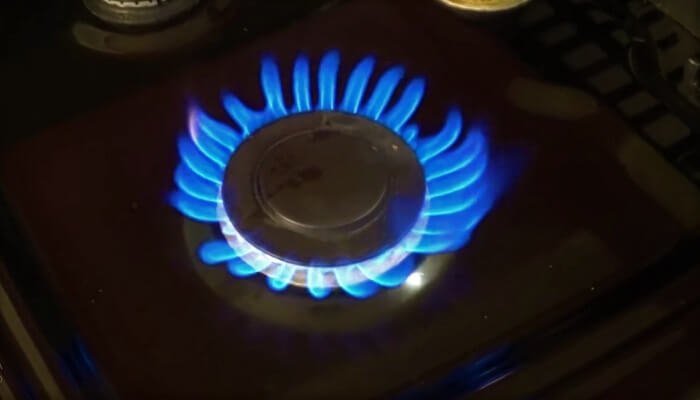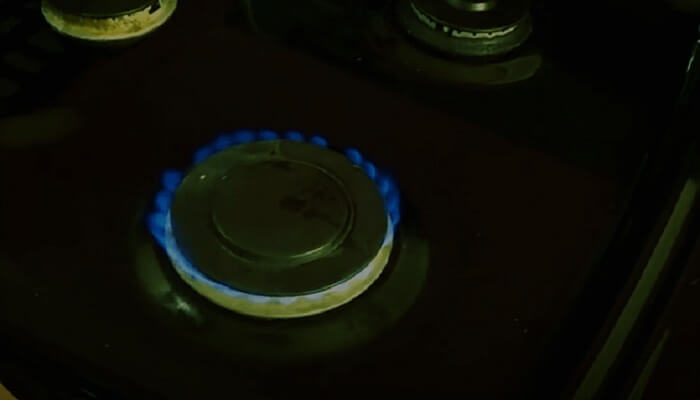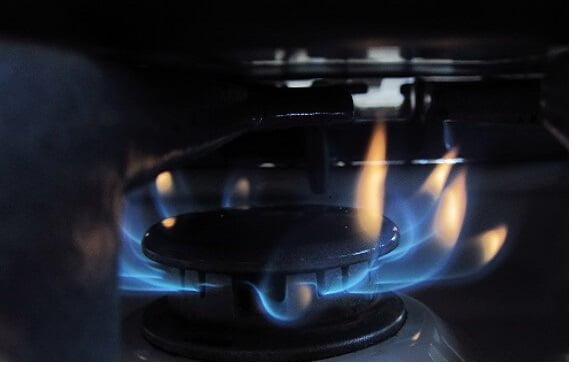Adjust Gas Stove Flame: Too High, Too Low, or Uneven!
Adjusting the gas stove flame is a simple process that ensures efficient cooking and prevents safety hazards. To adjust the flame on a gas stove, begin by locating the burner control knob. Turn the knob counterclockwise to increase the flame or clockwise to decrease it. It’s important to find the right balance for optimal cooking results.
When adjusting the gas stove flame, it’s crucial to aim for a blue flame. A blue flame indicates complete combustion and efficient fuel usage. If the flame is too high, it may produce excessive heat and uneven cooking. On the other hand, if the flame is too low, it can lead to prolonged cooking times and inefficient energy consumption.
Different stove models may have slightly varying adjustment methods. For a Whirlpool gas stove, the flame adjustment mechanism typically involves manipulating the air shutter or venturi tube. Consult the stove’s user manual for specific instructions.
Similar adjustment methods apply to LG, KitchenAid, Frigidaire, GE, and Maytag gas stoves. Locate the burner control knob and make gradual adjustments until you achieve a steady blue flame. It’s essential to periodically clean the burner ports to maintain an even flame distribution.
If you notice a yellow flame on your gas stove, it may indicate a potential issue with incomplete combustion. In such cases, it’s advisable to contact a professional technician to assess and address the problem promptly.
Adjust the Gas Stove Flame
Gas stoves can be a nuisance, especially when something small goes wrong and the flame becomes either too high, too low, or uneven. If you notice that you’re getting less than satisfactory cooking results because of flames burning out it doesn’t mean your stove is damaged, it needs to be discarded or repaired. A common problem, however, is that it may simply need to be rearranged or adjusted properly to return to normal functioning.

It is important not to use any harsh chemicals as they may cause further damage if left for long periods without proper cleaning techniques in place. Through this article, we’ll explain why the gas stove flame is too high and why the gas stove flame is too low, and how to adjust the gas stove flame.
If the Gas Stove Flame Is Too High
If you find that your gas burner stove flame is too high, this is a warning sign to you that something is wrong. Such high flames are usually seen for several reasons. The reasons for this and how to adjust the gas stove flame which is too high are described below-
1. Check the Burner Type
Check the type of your gas burner stove, and whether it is suitable for burning natural gas or made for liquefied propane gas. Not all made stoves are suitable models for burning all kinds of gas. For example, LP is a high-pressure gas. You need to have a suitable stove for this gas to use. Otherwise, it will send huge flames by sending gas at very high pressure, which is unpredictable and threatening.
Related: Best Natural Gas Stoves
2. Check the Orifice Device
The conduction pressure of natural gas is much lower than that of liquid propane and its tube wells are optimally installed. If you install an LP and connect a natural gas supply to a high-pressure LP piping system without converting the appliance, it’ll create a fatal risk. This is because the natural gas orifices placed in the factory ranges are not as small as the LP orifices, much larger. So you need to convert it and connect it to the lp system.
3. Excess Gas Pressure
Excessive gas pressure can often cause the flame to be higher. As a result, you will get a higher flame. You need to use a manometer to solve this problem. The manometer will help you adjust the gas pressure.
4. Adjust the Controller Valve
Another possible cause of high flame may be a fault in the gas controller. To solve this you need to adjust the controller of the control valve. Control valves should be replaced if needed.
5. Notice the Color of the Flame
If you notice that you have an extreme flame and it is not blue, it is another color, like yellow. Then this problem of yours may be risky. You can call a technician at your home before using the range as a next step.
If the Gas Stove Flame Is Too Low
There are some reasons why the gas stove flame is too low which is the opposite of why the gas stove flame is too high. There are some other significant reasons as well. These factors and how they can be adjusted are described below-
1. Check the Gas Pressure
The reason you get less flame in your gas burner stove is to make sure the gas supply to the banner is low. If the gas supply is low or the gas flow is interrupted, you will get less flame. If the problem seems to be caused by low pressure, call for a pro or remove the gas supply line and clean it. Replace if necessary.

2. Check the Flame Failure Device
If your stove is always on low flame, this is usually an indication that your flame protection device or flame failure device is faulty. The main sign is that the stove will burn, but the flame won’t rise to full height. This means that you’ll not experience the oven properly or reach your desired temperature. This device is primarily designed to limit the flow of gas to a safe level. This is a common error that can be easily corrected by calling a technician.
3. Adjust the Air Shutter
If you get less than the usual burner flame in the oven, the problem could be the air shutter. Reaching a very low-air burner can result in low or low-quality flames. Adjust the air shutter to make sure the problem is air.
4. Check the Orifice Device
Orifice devices are based on the location and type of burner as for natural gas it is large, and this device is small for LP gas. The Orifice of LP gas will not be effective for factories. Also, make sure that the burner sits properly on top of the orifice.
5. Check How Often It Has Been Used Recently
If not enough time has passed since the last use, air will remain within the unit. This creates an insulating effect on any remaining flames which makes them weaker Your cooking style.
If the Gas Stove Burner is an Uneven Flame
There may be times when your stove burns too hot or cools down which affects how the fire produces its heat and also makes adjusting difficult. There are several reasons why gas stove flames are so uneven. These reasons, including ways to adjust gas stove flame, are described below-
1. Adjust the Air Shutter Properly
One of the reasons why gas stove flames are so uneven is because they require oxygen to burn. This means that when you turn off one burner, it can cause another flame to go out since there’s not enough air for both fires.

Your burner can produce poor-quality flames if the initial air supply isn’t set properly. Properly adjusted, it delivers the right amount of air and you get the right flame. So adjust the air shutter to allow air to enter the burner to get your desired heat.
2. Check the Gas Jet
Check if the gas jet is blocked. It’s perforated. If this hole is blocked by a liquid then you won’t get the right flame. To solve this problem you can use a small brush to free the jet.
3. Check the Burner Cap and Reset
If there is too much flame on one side of your burner and too little on the other, it is a problem with the burner cap. The cap is then raised on one side to emit more gas and on the other side does not block the burning gas. This results.
To fix this you need to turn off your burner and reset your burner cap after a while.
4. Clean the Burner Slot
Another reason the flame is uneven is the burner slot. It may be stuck to the burner slot next to the burner. It needs to be cleaned. Remove the burner first to clean. Then look at the care and cleaning section of the manual.
With the above tips, we hope you find the solution to your problem. However, if you do not understand something properly, call a technician. Remember, one wrong action can put you and your family at risk.
Adjust the Air to Flame Ratio?
The air to flame ratio is the ratio of the amount of air that is being drawn into the furnace to the amount of natural gas or propane that is being burned. It is typically expressed as a percentage.
The air to flame ratio is controlled by a device called a gas valve. The gas valve is a mechanical device that regulates the flow of gas to the burner. The gas valve is opened by a signal from the thermostat or other control device. The amount of gas that flows to the burner is controlled by the size of the opening in the gas valve.
The ratio is also affected by the draft in the furnace. The draft is the movement of air through the furnace. The draft can be caused by a number of things, including the pressure difference between the inside and outside of the furnace, the temperature difference between the inside and outside of the furnace, and the movement of the furnace itself.
The ideal air to flame ratio is about 10%. This means that for every 1 cubic foot of gas that is being burned, 10 cubic feet of air are being drawn into the furnace.
If the ratio is too low, the flame will be yellow and smoky. This is because there is not enough oxygen in the air to support the complete combustion of the gas.
If the ratio is too high, the flame will be blue and noisy. This is because there is too much oxygen in the air and the gas is burning too rapidly.
The air-to-flame ratio can be adjusted by changing the size of the opening in the gas valve. This is typically done by a technician who has experience working with furnaces.
How to Adjust Flame on Whirlpool Gas Stoves?
If your Whirlpool gas stove isn’t cooking as evenly as it used to, you may need to adjust the flame. Here’s how:
- Start by taking a look at the burner heads. If they’re dirty, give them a good cleaning with soapy water and a soft brush.
- Once the burner heads are clean, check the gas ports. These are the tiny holes that the gas comes out of. If they’re clogged, use a needle to clear them out.
- Now it’s time to adjust the flame. Use a screwdriver to turn the screw next to the gas valve. Turn it to the right to make the flame higher, or to the left to make it lower.
- Test the stove by lighting a burner and cooking something on it. If it’s still not cooking evenly, repeat steps 1-3 until it does.
Troubleshooting Common Gas Stove Flame Problems
Several factors can disrupt a gas stove’s flame, including blockages, incorrect gas pressure, or faulty components. A weak flame often results from clogged burner ports, which can be cleaned with a needle or compressed air.
If cleaning doesn’t help, the issue may lie in the gas supply—low pressure from the regulator or a partially closed shutoff valve can restrict flow. Testing with another gas appliance can help determine if the problem is stove-specific or related to the gas line.
Another common issue is an uneven flame, where one side burns higher than the other. This usually indicates misaligned burner caps or uneven gas distribution. Ensuring all components are properly seated and undamaged can restore even flames. Persistent yellow flames suggest excessive carbon buildup or improper air-to-gas ratio, requiring adjustment of the air shutter.
If problems continue, consulting a professional ensures safe and accurate repairs. Proper maintenance and timely adjustments keep the stove functioning efficiently.
Frequently Asked Questions (FAQs)
How Can I Make My Gas Burner Hotter?
If your gas burner is not reaching the temperature you need, make sure that the knob is turned all the way to the “high” setting. If it is, then try opening the oven door for a minute or two to let some heat escape. This will create a draft that will help to increase the temperature of your burner. You can also try using a diffuser to help distribute the heat more evenly.
Why Is My Gas Stove Flame So Low?
If your gas stove flame is low, it could be due to a few different reasons. One possibility is that the gas pressure on your stove is low. This can be checked by looking at the regulator valve on your stove. If the pressure is low, you will need to contact your gas company to have it increased.
Another possibility is that the orifices on your stove burner are dirty. These can be cleaned with a small wire brush.
If neither of these is the problem, it is possible that the gas valve on your stove is not fully open. This should be checked by a qualified technician
Why Is the Flame on My Gas Stove Orange and Blue?
When gas is burned in a controlled way, like on a stove, the flame will be mostly blue. But if there is too much gas or not enough oxygen, the flame will be more orange.
So, if you see an orange flame on your gas stove, it means that the burner isn’t getting enough oxygen. This can be dangerous, so you should make sure to adjust the burner until the flame is mostly blue.
Conclusion
The flame on your gas stove should be even and stay at the same height no matter what you are cooking. If it is too high, food will burn; if it’s too low, food won’t cook properly or evenly. As a homeowner, it’s your responsibility to maintain your gas stove properly. If you notice that the flame is too high, too low, or uneven when cooking on your gas stove, it means something is wrong with your stove.
Adjusting gas stove flame is one of the parts of stove maintenance. Be careful and try to adjust it as soon as possible. We’ve discussed many tips on adjusting the gas stove flame here. Hopefully, you can find out and solve your specific problems.
To see our latest posts Click Here